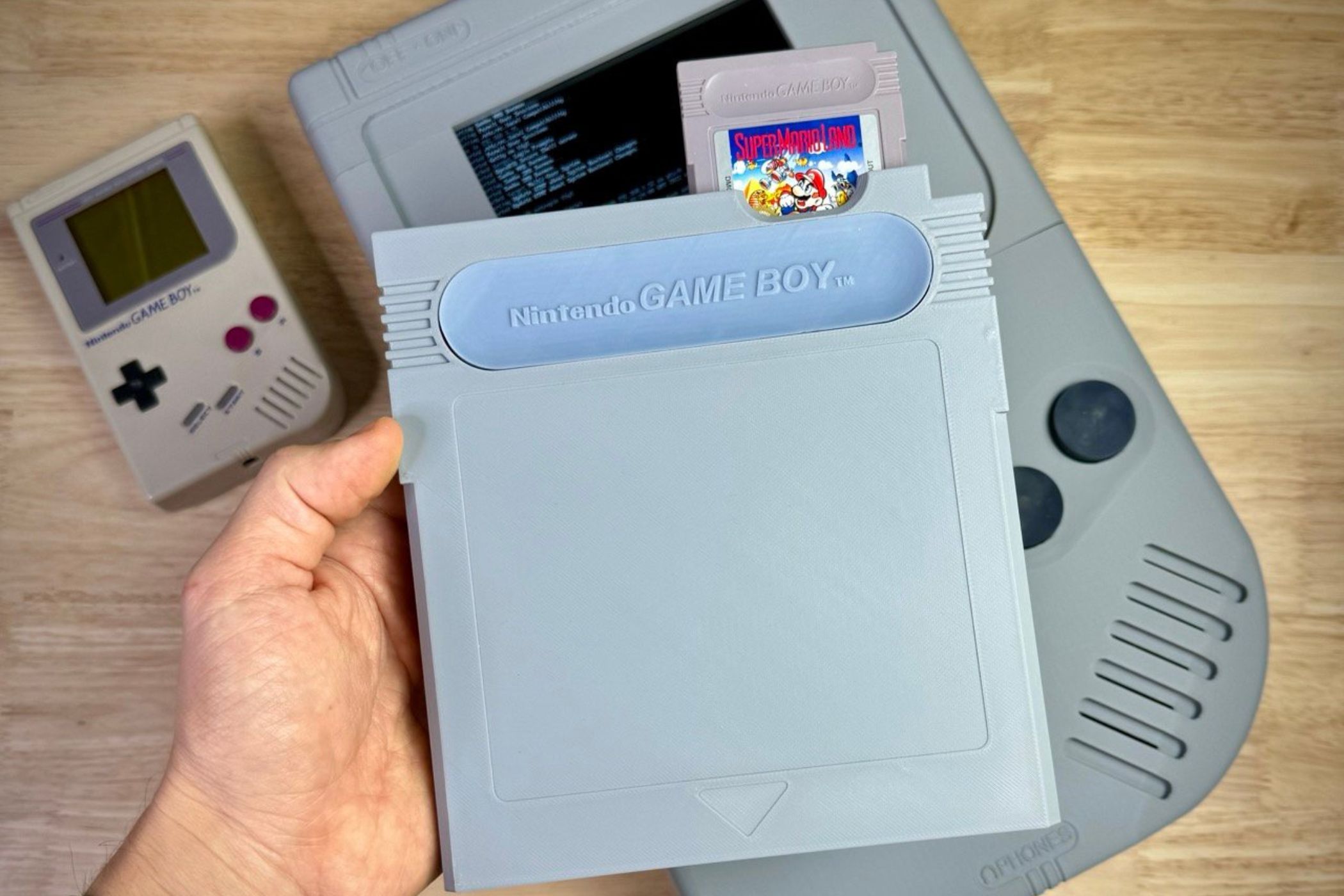We’re always excited about seeing another retro-inspired Raspberry Pi project, and this latest one makes your favorite old handheld game console bigger and better than ever. It’s a giant Game Boy more than six times its original size, and everything runs on a Raspberry Pi 4.
Over the years, DIY enthusiasts have created some stunning projects with these microcomputers. Like that tiny Pi-powered desktop, an iPod that streams Spotify, and now this super-sized Game Boy console featured by Raspberry Pi itself. Warner Skoch initially wanted to 3D print the front face of a Game Boy, then use a Raspberry Pi as a controller and turn it into a neat retro clock. However, thanks to the power of the Raspberry Pi 4 and thinking a bit about how to make it more nostalgic than ever, we now have a fully functional Game Boy for giants.
Skoch didn’t just want to play classic Game Boy titles from the Raspberry Pi or RetroPie. Instead, he opted to use authentic game cartridges. After 3D printing the entire Game Boy body, larger-than-life cartridges, and a complete set of buttons, all sending the signal out to a display over HDMI, the result is a fully functioning unit.
For example, all the buttons work great and take advantage of a Raspberry Pi Pico and some programming to double as a keyboard. Yes, you can put any game into the massive cartridge, then insert it into the Game Boy and start mashing those buttons on your way to beating Tetris or The Legend of Zelda.
The creator mentioned that the project still needs a little work and some finishing touches. The body of the super-sized handheld needs more sanding for a better in-hand feel and a little paint. Finally, he might swap the Raspberry Pi 4 for a Zero 2 to increase battery life—the Raspberry Pi 5 is starting to become available, but that could use even more power. This project might not be as big as that 3-ft Game Boy we saw in 2017, but it’s still quite impressive. You can even watch him play some Super Mario Land over on Instagram.
Source: Raspberry Pi

